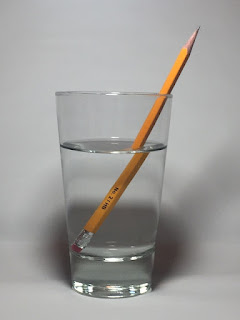Industrial inline refractometers use of the principle of refractometry to assess the physical qualities of fluid. Using the device, the refractive index of the fluid is measured, which indicates whether the product is according to specification. The fundamental physical property helps in determining the purity and composition of fluids.
Refractometers: An Overview
Refractometers are based on the principle of refractometry. The device measures the speed of a ray of light as it crosses from one medium to another. When light travels across two different media, its density and direction change. The change in direction is known as refraction.
Every material has a different refractive index (RI) that refers to the ratio of the velocity of light in a vacuum to the velocity in a specific medium.
Light travels faster in a medium with a lower optical density, resulting in a low reflective index. The lower the optical density of the medium, the lower will be the refractive index due to the higher speed of light. This principle of refractometry is used in various industrial processes for measuring different characteristics of a fluid such as:
- Hydrocarbon content
- Salinity
- Sugar concentration
- Protein concentration
Application of Refractometry in Industries
Refractometry is used in many different industries. Let’s look at the application of the technique of different industrial processes.
Food and Beverage Industry

Refractometry is commonly used in the beverage and food industry for quality control purposes. The technique helps in determining the purity and consistency of processed foods such as vegetables, jams, coffee, and dairy products.
The three important parameters that are assessed by refractometers in food processing. They include sugar percentage, acidity, and gelling agent concentration. These parameters are assessed to ensure the right mix that results in maximum shelf life.
The device is used for the measurement of percentage by weight of sugar in fruit juice. The measurement is also known as Brix. Accurate Brix measurement is critical for quality and cost control. The measurement can be carried out by assessing the density and refractive index. Both the parameters provide valuable insight into the content of the fruit.
Chemical Industry
Refractometry is also used for assessing the concentration of a range of chemicals in industries other than food and beverage. Sensors on refractometers installed on large tank, pipes, and reactor can determine the concentration of dissolved solids by optical measurement of the refractive index. The measurement is not influenced by bubbles, particles, temperature changes, or color of the liquid.
Oil Refineries
Oil refineries also rely on refractometers to determine the quality of the oil. Refractive index is used to know the identity of the oil immediately. This method helps in quickly checking the oil that is transferred to the storage facility.
Fertilizer Industry
Fertilizer industry also uses refractometry for assessing the quality of fertilizer solution. Density and refractive index are analyzed to find out the nitrogen concentration in the fertilizer. The method can help in assessing the quality of fertilizers easily, safely, and cost-effectively as compared to the manual method.
Pulp and Paper
Pulp and paper mills use industrial refractometers for green liquor and black liquor processing. Green liquor and black liquor are both part of the Kraft Process whereby wood chips are broken down into their chemical constituents and wood pulp.
Other Users of Refractometry
Refractometry is used in many other industries such as the perfume industry, coolants, lubricants industry, and the milk industry. The process helps in determining the quality and concentration of fluids in different industries.








